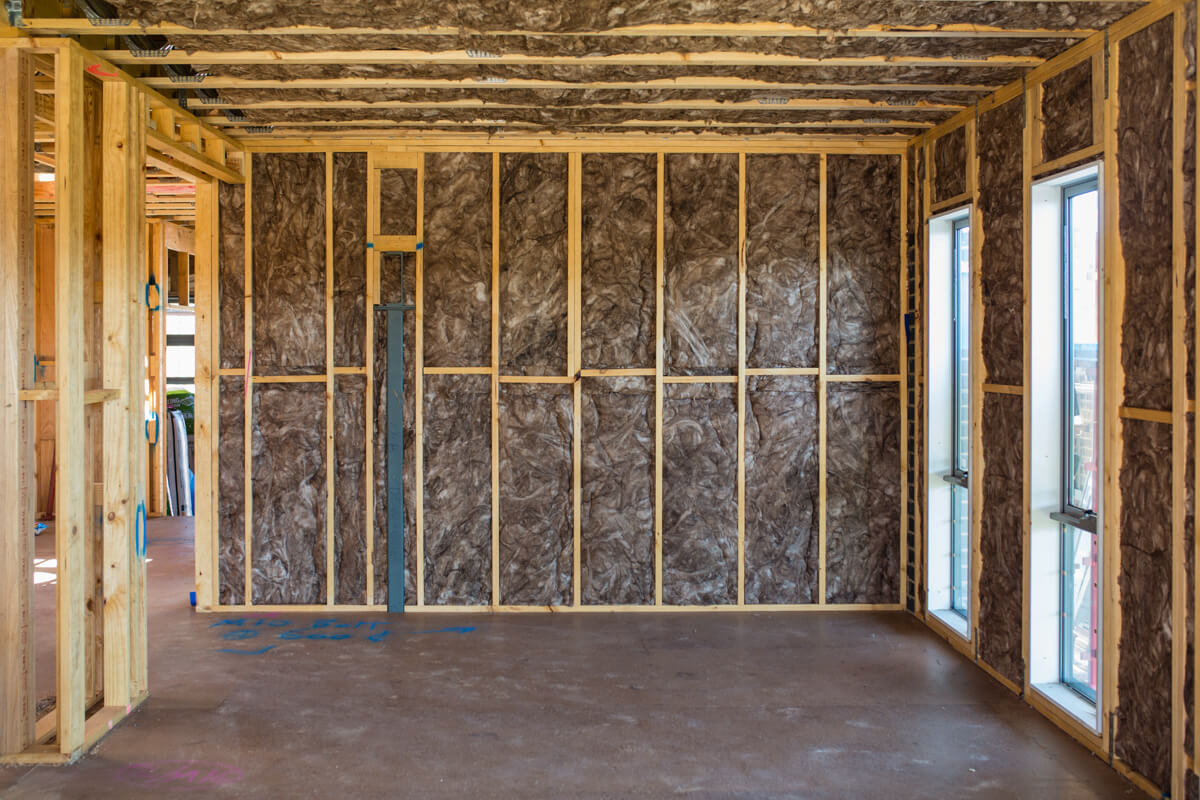
Proper acoustic insulation is a critical component of building design and construction. Insufficient insulation can lead to noise complaints, tenant dissatisfaction, and even legal issues.
Conversely, quality acoustic insulation ensures noise is contained, enhancing occupant comfort and satisfaction. This article examines acoustic insulation requirements within building codes, strategies for compliance, and best practices for optimal noise control.
Table of Contents
Building Code Requirements
Most jurisdictions have adopted model building codes which include minimum standards for acoustic insulation between dwellings. These requirements are intended to limit noise transmitted through walls, floors, and ceilings to acceptable levels. The International Building Code (IBC) references ASTM noise standards, specifying maximum decibel levels based on the type of occupancy. Multi-family residential dwellings have more stringent requirements than commercial spaces. The designer must demonstrate compliance through accepted acoustical analysis methods.
Compliance Strategies
There are several strategies designers employ to meet acoustic insulation requirements in the building code:
- Use construction assemblies with proven noise reduction performance. Concrete block walls or double stud walls with insulation, for example, perform better than standard stud walls.
- Increase the separation between noise sources. Separating dwellings with corridors or staggered studs reduces noise transmission.
- Specify acoustical caulking and gaskets at joints and openings. Solid gaskets around electrical boxes seal gaps in firewalls.
- Add mass and damping. More massive wall materials like concrete or double layers of gypsum board can improve acoustical isolation.
- Isolate the structure. Floating floors, resilient channels, and flexible duct connections prevent structure-borne noise transmission.
Each project has unique requirements, and the designer must thoughtfully apply one or more of these strategies to achieve compliance. Performing pre-construction acoustical analysis is recommended to identify potential deficiencies and corrective measures.
Best Practices
While building codes set minimum acoustic insulation requirements, there are several best practices designers should follow to optimize occupant comfort:
- Target noise levels 5-10 decibels lower than code. This provides an extra margin of acoustic isolation and flexibility if constructions change during implementation.
- Evaluate ambient noise sources near the building and consider enhanced exterior wall constructions to mitigate exterior noise intrusion.
- Specify enhanced acoustical treatment for spaces likely to generate significant noise like home theatres, exercise rooms, and music practice rooms.
- For condos and apartments, implement enhanced acoustical isolation between units at penetrations, chases, floors, and demising walls.
- Utilize construction quality assurance testing by accredited professionals and inspectors to identify and correct deficiencies prior to occupancy.
- Educate the contractor on the proper implementation of acoustical details and sequencing of construction to avoid defects. Pre-construction meetings focused on acoustics are ideal.
Following these best practices enhances acoustic performance beyond minimum code requirements, improving sound isolation and occupant satisfaction.
The Importance of Acoustic Insulation
Acoustic insulation serves several important functions in building design and occupancy. InsulationPoint noted that proper insulation between dwellings:
- Provides speech privacy – Occupants can conduct conversations without being overheard by neighbours. This ability to control sound privacy has a significant impact on comfort and satisfaction.
- Allows undisturbed sleep – Noise transmitted through walls, floors and ceilings can disrupt sleep patterns. Quality acoustic insulation ensures bedrooms remain quiet for uninterrupted rest.
- Enables choice of activity – With sufficient insulation, occupants can engage in louder activities like watching movies or playing music without disturbing others. Acoustic isolation enables choice and flexibility of use.
- Reduces tenant complaints – Deficient insulation often generates complaints from bothered neighbours. Proper insulation reduces transmitted noises that trigger complaints and dissatisfaction.
- Avoids enforcement actions – Inadequate acoustic separation can lead to legal orders from housing officials and litigation between occupants. Compliance with building code requirements prevents these enforcement actions.
- Increases property values – Buildings with a reputation for excellent acoustic isolation command higher rents and market values. Sound containment enhances building reputation and income potential.
- Demonstrates quality construction – Buildings with good acoustical performance indicate overall quality of design and construction. This reflects positively on developers and builders.
Quality acoustic insulation is a hallmark of good design and construction quality. Insufficient insulation quickly degrades occupant experiences and property values. By contrast, robust acoustic isolation enhances satisfaction, marketability, and asset value.
Tips for Constructing Quality Acoustic Insulation
The design and specification of acoustic insulation details are only the first step towards achieving quality noise control in buildings. Proper construction techniques are equally important for bringing the acoustical design to fruition. Here are tips for contractors and tradespeople to build effective acoustic isolation:
- Communicate requirements – Make sure foremen and tradespeople understand acoustic details on plans and their proper installation. Pre-construction meetings and coordination are key.
- Avoid defects – Build firewalls plumb and fill cells fully without gaps. Careful workmanship eliminates defects that compromise performance.
- Monitor insulation – Confirm full coverage with correct thickness and proper compression. Visual inspections ensure a quality installation.
- Seal penetrations – Apply acoustical caulk and gaskets meticulously at all junction boxes, pipes, and wire penetrations to close gaps.
- Protect assemblies – Do not cut studs short of ceiling or sole plates; maintain the integrity of wall assembly.
- Sequence properly – Install acoustic insulation before drywall, not after. Performance depends on correct sequencing.
- Field test – Conduct field sound tests between units during construction and remedy deficiencies prior to finishing.
Achieving specified acoustic performance requires diligence in construction techniques. Careful installation, sequencing, inspection, and testing are imperative. Good acoustic isolation is too important to leave solely to the design stage. Proper construction practices translate designs into quality noise control.
Final words
Designing for proper acoustic insulation requires understanding code requirements, applying proven noise control strategies, and attention to detail in construction. Thoughtful planning and design paired with robust quality assurance testing ensures regulatory compliance. Additionally, a well-implemented acoustical plan improves comfort and enjoyment for building occupants. By following both code requirements and best practice recommendations, designers can create dwellings with exemplary acoustic performance.